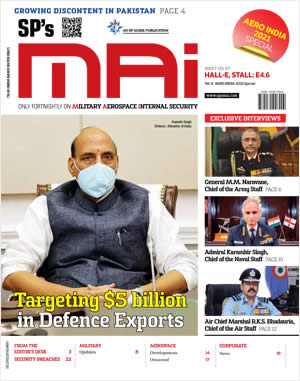INDIAN ARMED FORCES CHIEFS ON OUR RELENTLESS AND FOCUSED PUBLISHING EFFORTS
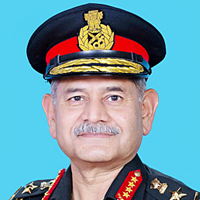
The insightful articles, inspiring narrations and analytical perspectives presented by the Editorial Team, establish an alluring connect with the reader. My compliments and best wishes to SP Guide Publications.
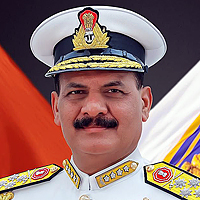
"Over the past 60 years, the growth of SP Guide Publications has mirrored the rising stature of Indian Navy. Its well-researched and informative magazines on Defence and Aerospace sector have served to shape an educated opinion of our military personnel, policy makers and the public alike. I wish SP's Publication team continued success, fair winds and following seas in all future endeavour!"

Since, its inception in 1964, SP Guide Publications has consistently demonstrated commitment to high-quality journalism in the aerospace and defence sectors, earning a well-deserved reputation as Asia's largest media house in this domain. I wish SP Guide Publications continued success in its pursuit of excellence.
- Prime Minister Modi Visits Punjab’s Adampur Air Base, Interacts with Airmen after Successful ‘Operation Sindoor’; Stern Message to Pakistan
- The layered Air Defence systems that worked superbly, the key element of Operation Sindoor
- Operation Sindoor | Day 2 DGMOs Briefing
- Operation Sindoor: India strikes back with Precision and Purpose
- Operation Sindoor: Resolute yet Restrained
- India’s Operation Sindoor Sends a Clear Message to Terror and the World – ‘ZERO TOLERANCE’
- Japan and India set forth a defence cooperation consultancy framework, talks on tank and jet engines
- Terrorist Attack in Pahalgam in Kashmir: Unfolding a long surgical war against PAK
- Lt General Pratik Sharma takes over Command of Indian Army's Northern Command
Need to expedite advanced aero technologies and long-range air-to-air missile systems to strengthen India's air power capabilities, Defence Secretary
In the conference on Indigenous Development of Critical Technologies for Air Power, hosted by the Centre for Aerospace Power and Strategic Studies and Strategic Insights, Defence Secretary Rajesh Kumar Singh called out the importance of developing advanced aero technologies, field evaluation trials, and long-range air-to-air missile systems to strengthen India's air power capabilities.
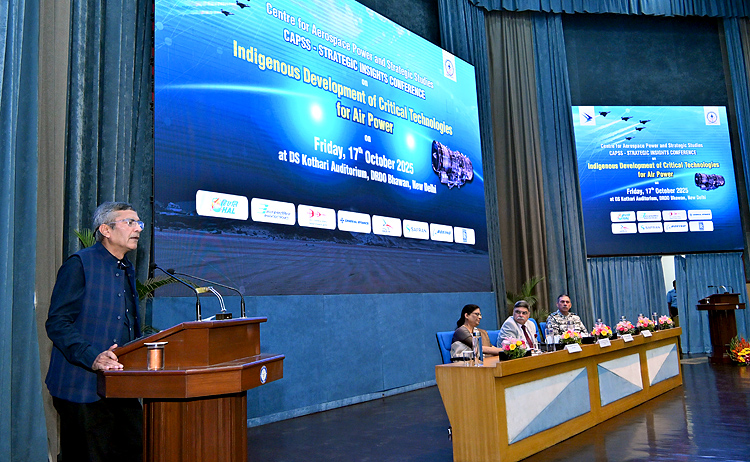
The Centre for Aerospace Power and Strategic Studies (CAPSS) and Strategic Insights organised the 'Conference on Indigenous Development of Critical Technologies for Air Power' in the D.S. Kothari Auditorium, DRDO Bhawan, New Delhi. The conference saw senior officials from the Ministry of Defence, the Indian Air Force, DRDO, and industry leaders come together to discuss India's journey towards technological self-reliance in the aerospace and defence realms.
Delivering the inaugural address, Rajesh Kumar Singh, Defence Secretary, Ministry of Defence, emphasised the government's steadfast commitment to Atmanirbharta in defence production. He underlined the need for a structured policy framework to strengthen India's domestic industrial base through a balanced synergy between public and private sectors. Highlighting the government's efforts to create open opportunities for start-ups, he noted that a spiral development model and diversification of the industrial base will end monopolies, enhance ease of doing business, and promote innovation across the ecosystem. He also stressed the importance of developing advanced aero technologies, field evaluation trials, and long-range air-to-air missile systems to strengthen India's air power capabilities.
Defence Secretary emphasised the government's steadfast commitment to Atmanirbharta in defence production and the need for a structured policy framework to strengthen India's domestic industrial base through a balanced synergy between public and private sectors.
During his special address, Air Marshal Narmdeshwar Tiwari, Vice Chief of the Air Staff, highlighted the contribution of air power in determining strategic results, as seen during 'Operation Sindoor'. He said that apart from capabilities to design and develop indigenous aircraft, India should also prioritise achieving expertise in electronic warfare, advanced sensors, radars, and data links.
Leading the debate, Manish Kumar Jha, Founder, Strategic Insights and Consulting & Contributing Editor, SP Guide Publications addressed the challenges in the session on critical and advanced tech for air power, observed that India's progress with the Kaveri Engine demonstrates substantial indigenous capacity, but called for accelerated co-development efforts with global partners such as Safran and Rolls-Royce to achieve higher-thrust engines for AMCA and Tejas Mk-II.
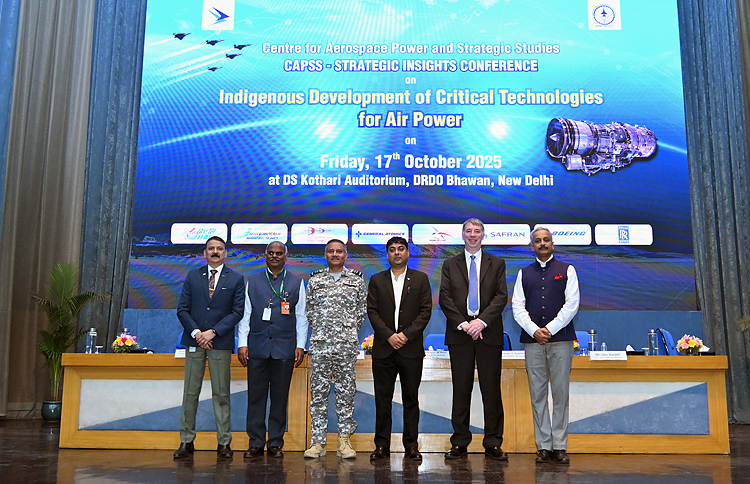
On the critical issue of the Jet Engine Co-development session, chaired by Air Marshal A.K. Bharti, Deputy Chief of Air Staff (DCAS) at Air HQ, pointed out that India had earlier developed a workable fighter jet but was stalled due to the shortcomings of the aero-engine. He called out the industry to address the constraint, with the intent to develop a jet engine of higher capacity.
"Intent has to be that OEMs co-develop a jet engine in India addressing the core technologies gaps," Deputy Chief said during the deliberation in the conference.
Air Marshal Narmdeshwar Tiwari, Vice Chief of the Air Staff, highlighted the contribution of air power in determining strategic results, as seen during 'Operation Sindoor'.
K. Rajalakshmi Menon, Director General, AERO, DRDO, in her keynote address, highlighted the disruptive potential of UAVs, multi-sensor fusion, and artificial intelligence in air operations. She spoke of advancements in stealth technology, aerostats, and airships equipped with enhanced sensors, as well as the integration of quantum, photonic, and blockchain technologies in defence systems.
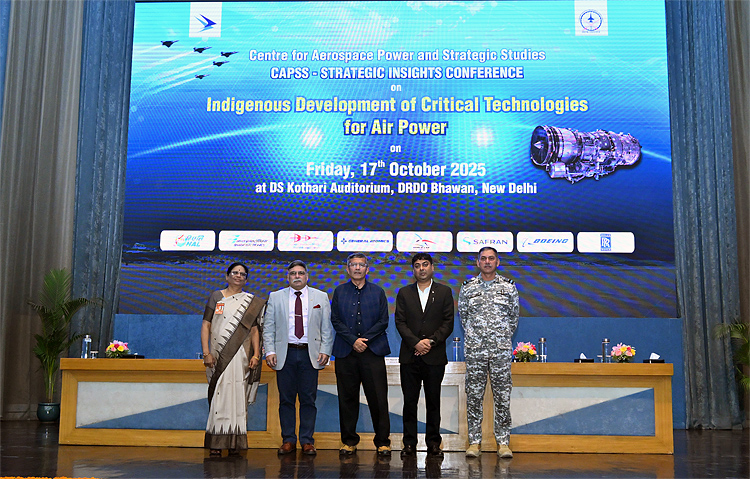
Earlier, Air Vice Marshal Anil Golani (Retd), Director General, CAPSS, welcomed the dignitaries and participants. He drew attention to the significance of Atmanirbharta amid the evolving security environment and the growing technological competition in the neighbourhood. Stressing the need to leverage artificial intelligence, advanced avionics, and next-generation propulsion systems, he emphasised that the development of intelligent control propulsion, super-cruise capability, and fly-by-light systems will define the future of India's aerospace dominance.
K. Rajalakshmi Menon, Director General, AERO, DRDO, in her keynote address, highlighted the disruptive potential of UAVs, multi-sensor fusion, and artificial intelligence in air operations.
AVM Golani, while greeting the participants and dignitaries, also highlighted the importance of Atmanirbharta in the context of the changing security environment and increasing technology competition in the neighbourhood. He emphasised leveraging artificial intelligence, advanced avionics and next-generation propulsion systems. Also, he underscored the development of intelligent control propulsion, super-cruise capability, and fly-by-light systems to shape the future of India's supremacy in aerospace.
The conference also featured a book release by the Defence Secretary, 'Asian Defence Review 2025: Geo-political Shifts and Strategic Partnership Multilateralism in the Indo-Pacific' and multiple technical sessions covering indigenous jet engine co-development, fighter aircraft programmes, unmanned systems, and strengthening the aerospace production ecosystem.
The conference reaffirmed India's strategic resolve to integrate emerging and disruptive technologies into its air power architecture, driving self-reliance and global competitiveness in aerospace innovation.
Concluding the day's proceedings, Manish Kumar Jha leading the session on critical and advanced tech for air power, observed that India's progress with the Kaveri Engine demonstrates substantial indigenous capacity, but called for accelerated co-development efforts with global partners such as Safran and Rolls-Royce to achieve higher-thrust engines for AMCA and Tejas Mk-II.
The conference reaffirmed India's strategic resolve to integrate emerging and disruptive technologies into its air power architecture, driving self-reliance and global competitiveness in aerospace innovation.





